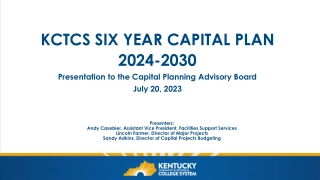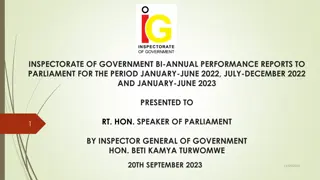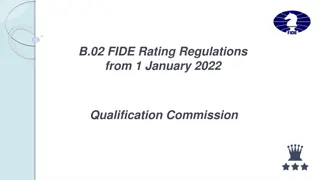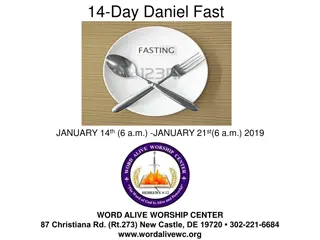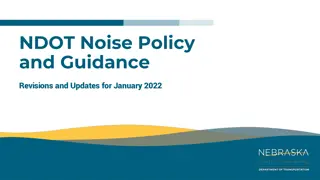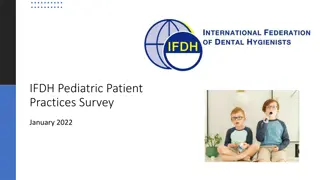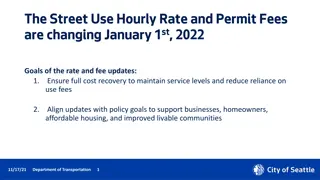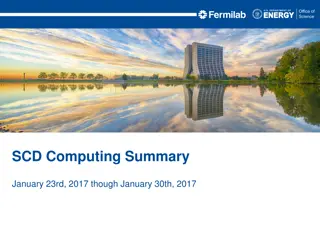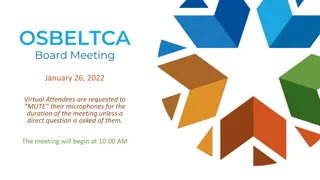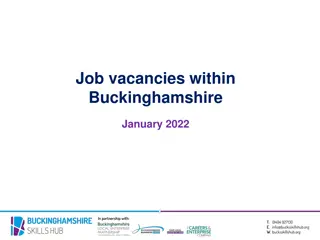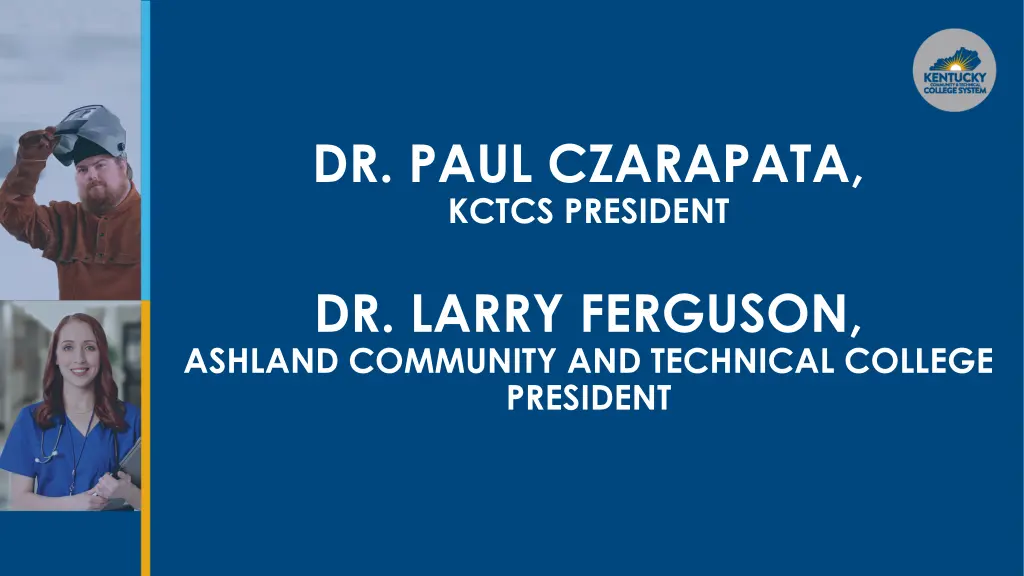
Dual Credit Opportunities at KCTCS: Empowering High School Students
Discover how KCTCS offers dual credit courses, allowing high school students to earn college credit. Learn about the impact of dual credit programs on students and the community, and the proposed updates to dual credit scholarships in Kentucky.
Download Presentation

Please find below an Image/Link to download the presentation.
The content on the website is provided AS IS for your information and personal use only. It may not be sold, licensed, or shared on other websites without obtaining consent from the author. If you encounter any issues during the download, it is possible that the publisher has removed the file from their server.
You are allowed to download the files provided on this website for personal or commercial use, subject to the condition that they are used lawfully. All files are the property of their respective owners.
The content on the website is provided AS IS for your information and personal use only. It may not be sold, licensed, or shared on other websites without obtaining consent from the author.
E N D
Presentation Transcript
DR. PAUL CZARAPATA, KCTCS PRESIDENT DR. LARRY FERGUSON, ASHLAND COMMUNITY AND TECHNICAL COLLEGE PRESIDENT
DUAL CREDIT 101 Dual credit courses give students the chance to earn college credit by taking one or more college-level courses while they are still in high school. They can earn both high school and college credit for each dual credit course taken. Dual credit courses can take place at a variety of locations, including high schools, Area Technology Centers, Career/Tech Centers, the college and online.
DU KCTCS is the leading provider of dual credit in the Commonwealth. We appreciate the opportunity to give students a head-start on their education, help them & their families save money, and get these individuals into the workforce faster.
Over the last five years, we have increased the number of dual credit students by 90%.
Coupled with the drop in credential-seeking students and workforce students due to COVID-19, high school students accounted for just over 30% of KCTCS students in Fall 2021.
For the 2020-21 Academic year, KCTCS had 20,701 dual credit students at our 16 colleges.
Normally, this would result in $27 million tuition dollars for KCTCS.
But, it didnt. Why? In 2017, the General Assembly created the dual credit scholarship, which mandated universities and KCTCS charge 1/3 of the per credit hour tuition charged by KCTCS.
We are not seeking to change the scholarship with HB 85! This is just a clean up bill that clears up language between the Work Ready KY Scholarship and Dual Credit Scholarship and will help KCTCS come closer to breaking even on offering dual credit.
In the 2020-21 budget bill, the dual credit rate was increased to 40% of the KCTCS Tuition rate.
HB 85 would set the rate to 50% of the KCTCS Tuition Rate in statute, which helps to promote financial clarity for students and the institutions.
HB 85 would also: Eliminate need for institutions to return 50% of funds for unsuccessful course completions (only scholarship that required this). Transfer Work Ready Kentucky career & technical education dual credit language to the dual credit statutes. Maintain the current number of scholarship-funded courses for students to take at 10 (2 CTE Courses freshmen year; 2 CTE courses sophomore year; 3 Gen Ed junior year; 3 Gen Ed senior year).
Mason Spencer has been accepted for Pharmacy School and he credits the dual credit program at Hazard Community & Technical College for getting him so far so quickly. Spencer is a 2019 Knott County Central High School graduate who started at Morehead State University with 30 credit hours from HCTC. Taking dual credit classes in high school helped me be become better prepared for college. Going in with 30 credits completed allowed me to focus more on my rigorous science and math courses needed to apply for Pharmacy school. It has also been a huge help in cost savings on tuition.
KCTCS & PERFORMANCE FUNDING
Prior to performance funding, the KCTCS Colleges received varying amounts of state funding based on history, geography, demographics, consolidation, and regional and state politics. There was a single appropriation for the System divided internally; no set performance metrics were used to distribute funding in short, Colleges received what they always received (plus an increment, if new funding was available) unless they could demonstrate greater need for an additional increase in funding. Colleges in coal counties were historically provided with more funding than urban or non-coal areas, due to their disadvantaged economies and geography.
FY 2020-21 state funding per Full-time Equivalent (FTE) students KCTCS: $3,986. Compared to (excluding mandated programs): KSU: $9,888 U of L: $6,610 UK: $6,214 MoSU: $5,151 MuSU: $5,308 EKU: $5,145 WKU: $4,711 NKU: $4,208
FY 2020-21 Fall FTE Enrollment KCTCS: 40,578 Compared to: KSU: 1,785 U of L: 18,650 UK: 28,727 MoSU: 6,609 MuSU: 7,450 EKU: 11,532 WKU: 13,995 NKU: 11,814
With the inception of performance funding in 2016-17, a method was established for KCTCS to distribute funding based on established metrics among its 16 Colleges. The funding model establishes an equilibrium for each of the 16 Colleges and defines it as follows: an institution has an appropriately proportionate level of resources as determined by the performance funding model established in this section given each institution's level of productivity in achieving student success outcomes, course completion outcomes, and other components included in the model.
The 16 KCTCS Colleges are in a performance funding pool of their own meaning, the Colleges must compete against each other (despite all belonging to the same System).
Six colleges Ashland, Big Sandy, Hazard, Henderson, Madisonville, and Southeast have never received any performance funding regardless of their metrics. Since the inception of performance funding in 2016-17, these Colleges have been required to redistribute their historical state funding in amounts ranging from $471,000 to $1.35 million. Collectively, over $6.3 million has been reallocated from these coal-area Colleges to their sister Colleges.
In 2021, per the Postsecondary Education Working Group on Performance Funding, language was added to the performance funding models for both the 4-year and 2- year institutions that ceased the reallocation from one institution to another by establishing a base ( floor ) state appropriation for each institution so that no institution would receive less than it was receiving in state appropriation for FY 2020-21. However, the six KCTCS Colleges noted will not receive any newfunding until KCTCS s other 10 Colleges are at equilibrium with the 2-year performance funding model.
For all 16 KCTCS Colleges to be funded at equilibrium per the 2-Year Performance Funding Model, without reallocation of state support from one KCTCS College to another one ( robbing Peter to pay Paul ), nearly $64 million in additional recurring state funding is needed (as calculated with FY 2020-21 enrollment and current performance funding metrics). Keep in mind that no KCTCS College is overfunded as compared to its university counterparts (a KSU student receives nearly $6,000 more in state appropriations than a KCTCS FTE student).
There have been adjustments in the model for the universities ( small school adjustment for KSU, MoSU and MuSU; catch-up appropriation for NKU and WKU). The General Assembly will have the opportunity to look at the KCTCS pool for possible adjustments to address these inequities when the model is reviewed in 2023. KCTCS is already working with CPE for possible solutions to the GA.



